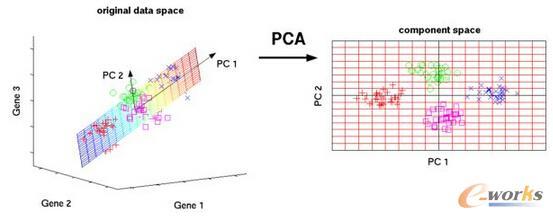The acquisition of channel state information (CSI) in Frequency Division Duplex (FDD) massive MIMO has been a formidable challenge. In this paper, we address this problem with a novel CSI feedback framework enabled by the partial reciprocity of uplink and downlink channels in the wideband regime. We first derive the closed-form expression of the rank of the wideband massive MIMO channel covariance matrix for a given angle-delay distribution. A low-rankness property is identified, which generalizes the well-known result of the narrow-band uniform linear array setting. Then we propose a partial channel reciprocity (PCR) codebook, inspired by the low-rankness behavior and the fact that the uplink and downlink channels have similar angle-delay distributions. Compared to the latest codebook in 5G, the proposed PCR codebook scheme achieves higher performance, lower complexity at the user side, and requires a smaller amount of feedback. We derive the feedback overhead necessary to achieve asymptotically error-free CSI feedback. Two low-complexity alternatives are also proposed to further reduce the complexity at the base station side. Simulations with the practical 3GPP channel model show the significant gains over the latest 5G codebook, which prove that our proposed methods are practical solutions for 5G and beyond.
翻译:在频率司Duplex(DFD)大规模MIMO中,获取频道状态信息是一个艰巨的挑战。在本文件中,我们通过宽频系统中的上链接和下链接频道部分对等性而促成的新CSI反馈框架来解决这个问题。我们首先得出宽频大宽频大型MIMO频道共变矩阵等级的封闭式表达方式,用于给定角偏差分布。确定了低级别属性,概括了窄频带统一线性阵列设置的众所周知的结果。然后,我们提出了一条部分对等频道代码手册(PCR),其灵感来自低级别行为以及上链接和下链接频道具有类似角度差错分布的事实。与5G的最新代码手册相比,拟议的PCM 代码计划取得了更高的性能,在用户方面更复杂,需要更少的反馈。我们从反馈中获得了必要的间接反馈,以便实现无偏差的CSII 线阵列设置的反馈。我们还提出了两种低兼容性替代方法,以进一步降低基础站的复杂度,因为低级别行为方式和下链接频道有类似的角度间隔分布。与5G的拟议代码系统展示了超过5号的重大实用方法。





